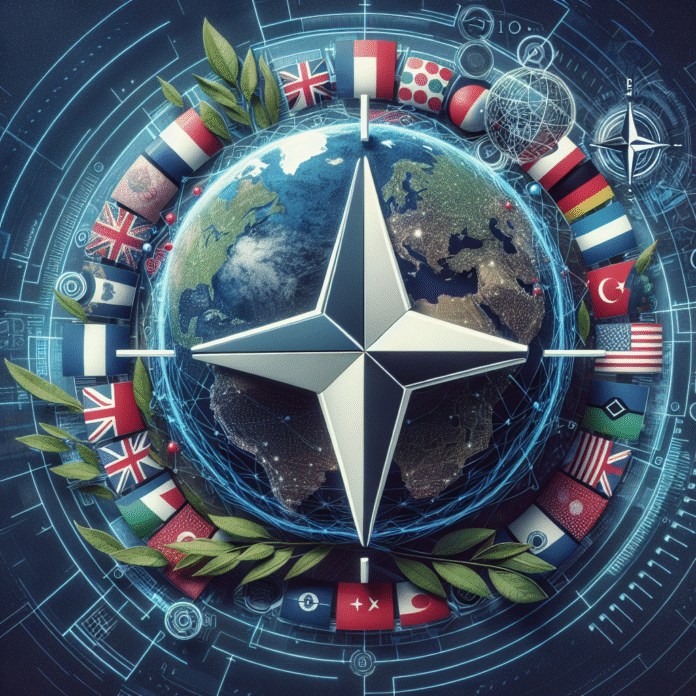The Future of Alliances: NATO’s Role in an Evolving World Order
In an era marked by geopolitical shifts, emerging threats, and advanced technologies, the North Atlantic Treaty Organization (NATO) stands at a crossroads. Established in 1949 as a collective defense alliance against Soviet aggression, NATO has adapted over decades to meet the changing dynamics of global affairs. Today, as the world grapples with the rise of new powers, hybrid warfare, and cybersecurity challenges, NATO’s role and relevance necessitate reevaluation and rejuvenation.
1. Geopolitical Shifts
The post-Cold War era was largely characterized by the unipolarity of the United States. However, recent trends suggest a multipolar world where nations such as China and Russia are asserting more influence. NATO’s response to these geopolitical shifts is crucial. The resurgence of Russian expansionism, as evidenced by its actions in Ukraine and its military posturing towards NATO member states, underscores the need for a united and robust response among allies.
Simultaneously, China’s rise challenges NATO in new ways. Its Belt and Road Initiative expands its footprint across Europe, Africa, and beyond, creating economic dependencies that could challenge NATO’s traditional security paradigms. Consequently, NATO must broaden its focus to include strategic partnerships that address challenges emanating from the Indo-Pacific region, fostering collaboration with partners such as Australia, Japan, and South Korea.
2. Evolving Threat Landscapes
The nature of threats facing NATO has evolved significantly. While traditional military confrontations remain a possibility, asymmetric warfare, terrorism, and cyber threats are now primary concerns. The past two decades have shown that adversaries may not always employ conventional tactics; instead, they may resort to hybrid warfare that blends military and non-military tools.
NATO has made strides in countering such threats by enhancing its situational awareness and intelligence-sharing capabilities. The establishment of the NATO Cyber Operations Centre and the adoption of a Cyber Defense Policy highlights the alliance’s commitment to addressing these modern threats. However, continued investment in technology, innovation, and partnerships will be essential.
3. Enhanced Collaborative Frameworks
To remain relevant, NATO must embrace a more inclusive and adaptable model that accommodates not just military alliances but also diplomatic and cultural ties. The concept of "Allied Warmth" is shifting towards embracing a broader spectrum of security, incorporating diplomatic, economic, and societal dimensions.
Through enhanced collaborations with non-member countries and international organizations, NATO can leverage diverse strengths and capabilities. Initiatives like NATO’s Partnership for Peace and cooperation with entities like the European Union are examples of how NATO continues to enhance its reach and relevance.
4. The Role of Technology
Technological advancements are reshaping the battlefield. From autonomous systems to artificial intelligence, the pace of change demands that NATO invests in innovation. Maintaining technological superiority is paramount for deterrence and defense strategies.
Furthermore, the alliance must also address the ethical implications of warfare technology. As NATO member states prepare for a future that could involve AI-driven military operations, discussions on the ethical use of these technologies will be imperative to uphold democratic values and international law.
5. Public Perception and Political Will
The effectiveness of NATO is not solely dependent on military capabilities but also on the support of its member nations. Public perception of NATO’s purpose and value must be continually nurtured. In recent years, skepticism towards international alliances has grown in some member states, fueled by nationalistic sentiments and the complexity of global issues.
NATO leaders must effectively communicate the importance of collective defense, mutual support, and the advantages of remaining united in addressing both traditional and emerging threats. Engaging with local populations through educational initiatives and transparent policymaking can foster greater public support.
Conclusion
As NATO looks to the future, its role as a cornerstone of transatlantic security will be critical in navigating an evolving world order. The alliance faces the dual challenge of addressing historical adversaries while simultaneously adapting to novel and multifaceted threats. Through commitment, collaboration, and an emphasis on innovation, NATO can continue to be a pillar of stability and security in an increasingly complex global landscape. The future of alliances hinges on the collective will of member states to respond to the changing tides of politics, technology, and warfare, ensuring that NATO remains relevant for generations to come.






